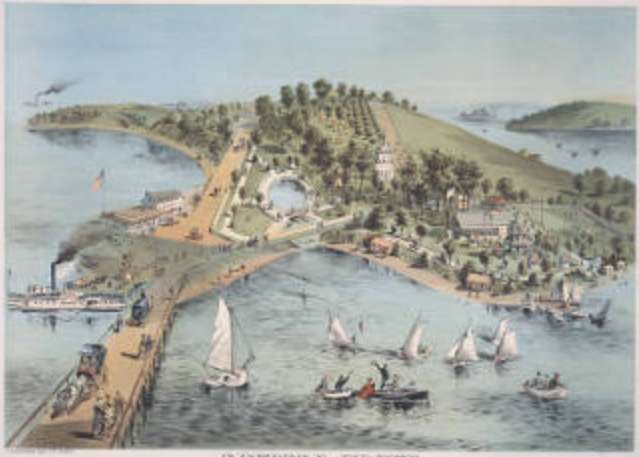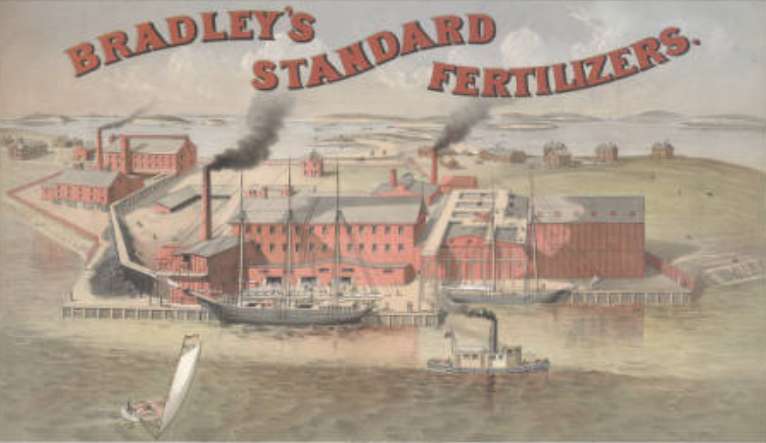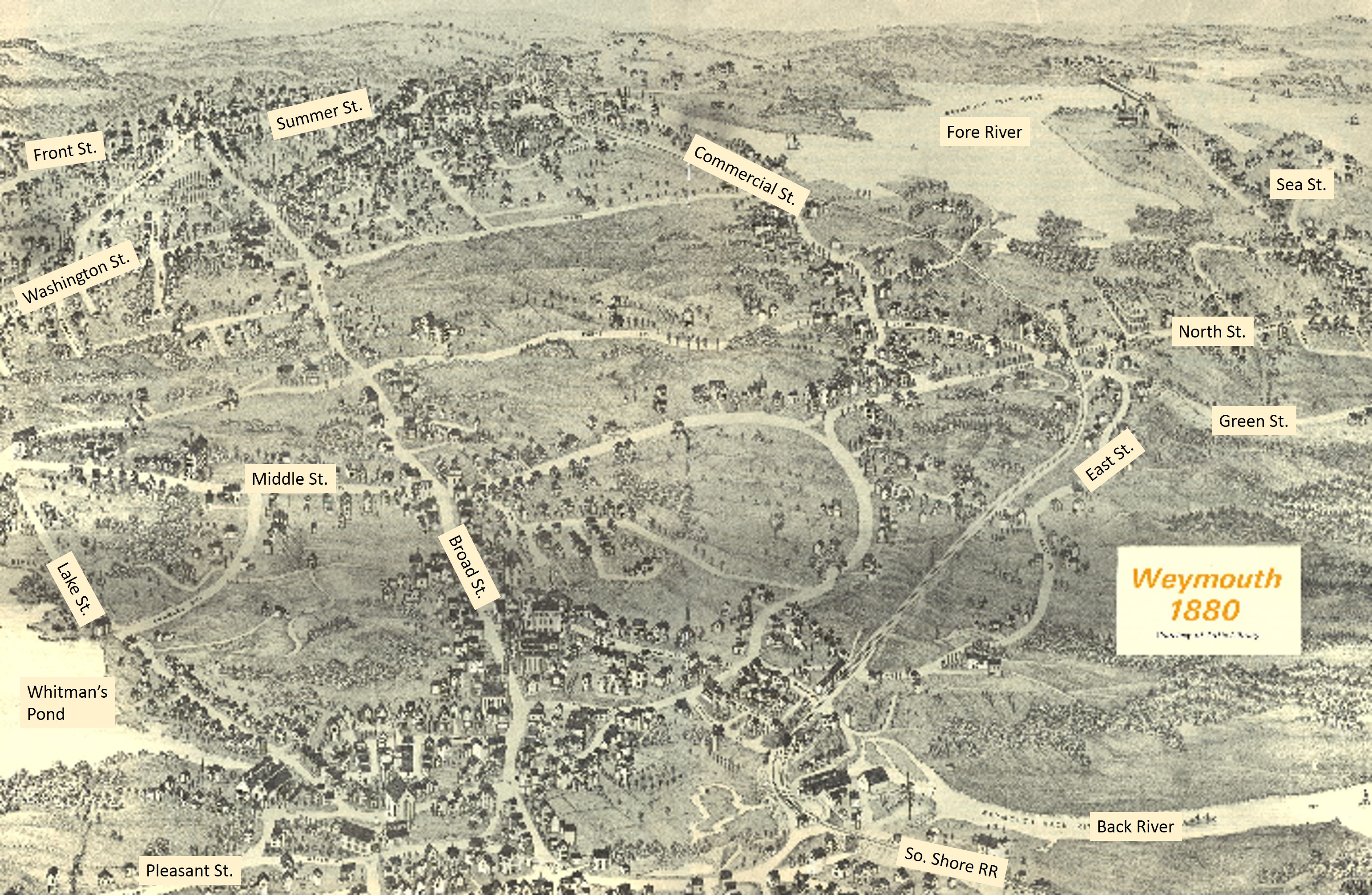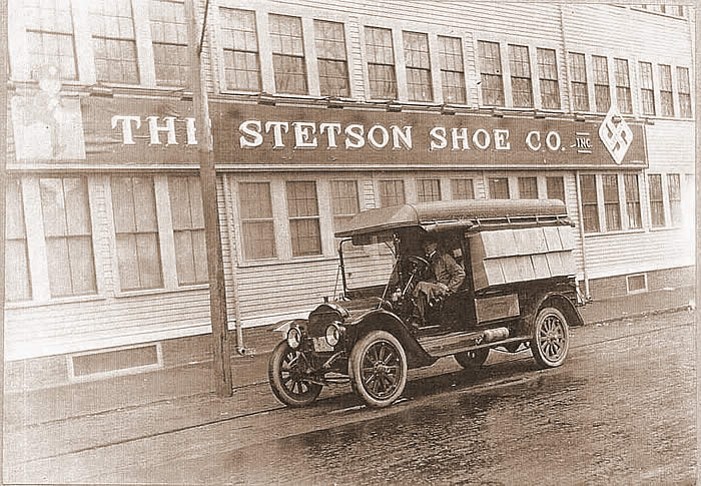Continued Development
With the growth of local industry and commerce and the development of railroads in the mid-1800's, the Town prospered, and by 1870 the population had grown to over 6,000. Weymouth even became somewhat of a destination for residents in the Boston area. The print below shows Lovell's Grove in North Weymouth in 1875 viewed from Quincy Point to the west. There is a small park in the center, and pleasure boaters can be seen in the Fore River. The steamship Massasoit can be seen docked at Downer's Landing on the left after bringing sightseers from Boston, and vehicles and strollers can be seen on the Old Colony Road bridge.

Lovell's Grove, Weymouth, MA
Source: http://cdm.bostonathenaeum.org/cdm/ref/collection/p13110coll5/id/955
The Bradley Fertilizer Company (pictured below) was founded on the point of land adjacent to the Back River on Weymouth Neck in 1874 and remained in operation until 1982 when it was purchased by ConocoPhillips. They, in turn, sold the land to the Weymouthport Peninsula Corporation in 1967, and the manufacturing buildings were demolished for redevelopment. Condominiums were built in this area in the 1970s and 1980s. In the late 1990s environmental sampling at the site revealed elevated levels of arsenic and lead at the site. ConocoPhillips agreed to pay for clean up and remediation of the site.

Source: http://cdm.bostonathenaeum.org/cdm/ref/collection/p13110coll5/id/5

Weymouth in 1880
Adapted from http://www.weymouth.ma.us/sites/weymouthma/files/file/file/illustrated_maps_1.pdf
Link to a large PDF of this map and a map of the original footpaths in Weymouth
From http://www.weymouth.ma.us/history
"When Weymouth's iron industry declined in the face of competition from Pennsylvania steel mills, the shoe industry rose to the economic forefront. Shoe manufacturing employed about 75 percent of community residents, and along with some other manufacturing ventures, it supported Weymouth's economy through World War II. Immigration helped supply the workforce for the new businesses, and arriving cultures helped populate the town (along with the rest of the Great Boston region). Although Weymouth was linked by streetcars and railroads to surrounding communities, most of the local retail and service businesses were in close proximity to one another and within walking distance of many homes. This was an era when local corner stores thrived on foot traffic."
In 1882 The Stetson Shoe Co. was the last of the shoe factories to open in Weymouth. It remained in operation until the 1960s.


